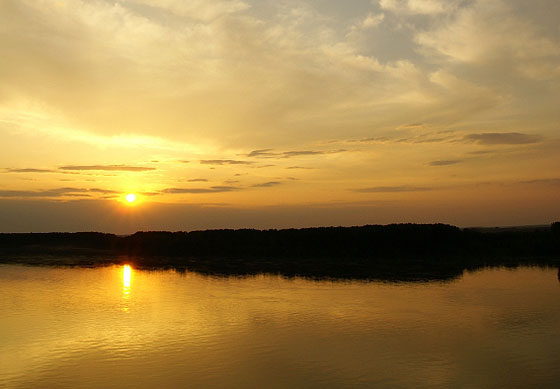
- Sunset on the Dabube River
- istockphoto.com
Along the Danube
Europe’s first farmers learned to identify a type of fertile soil about 6,500 years ago. Wherever they found pockets of mineral-rich loess (windblown deposits of silt left by the last glaciers), they put in small plots of emmer wheat and barley. When yields declined, they moved to new areas of loess. They kept cattle, made stone tools, and built large rectangular houses in villages. Their culture, called LBK, spread over large areas north and west of the Danube River.
